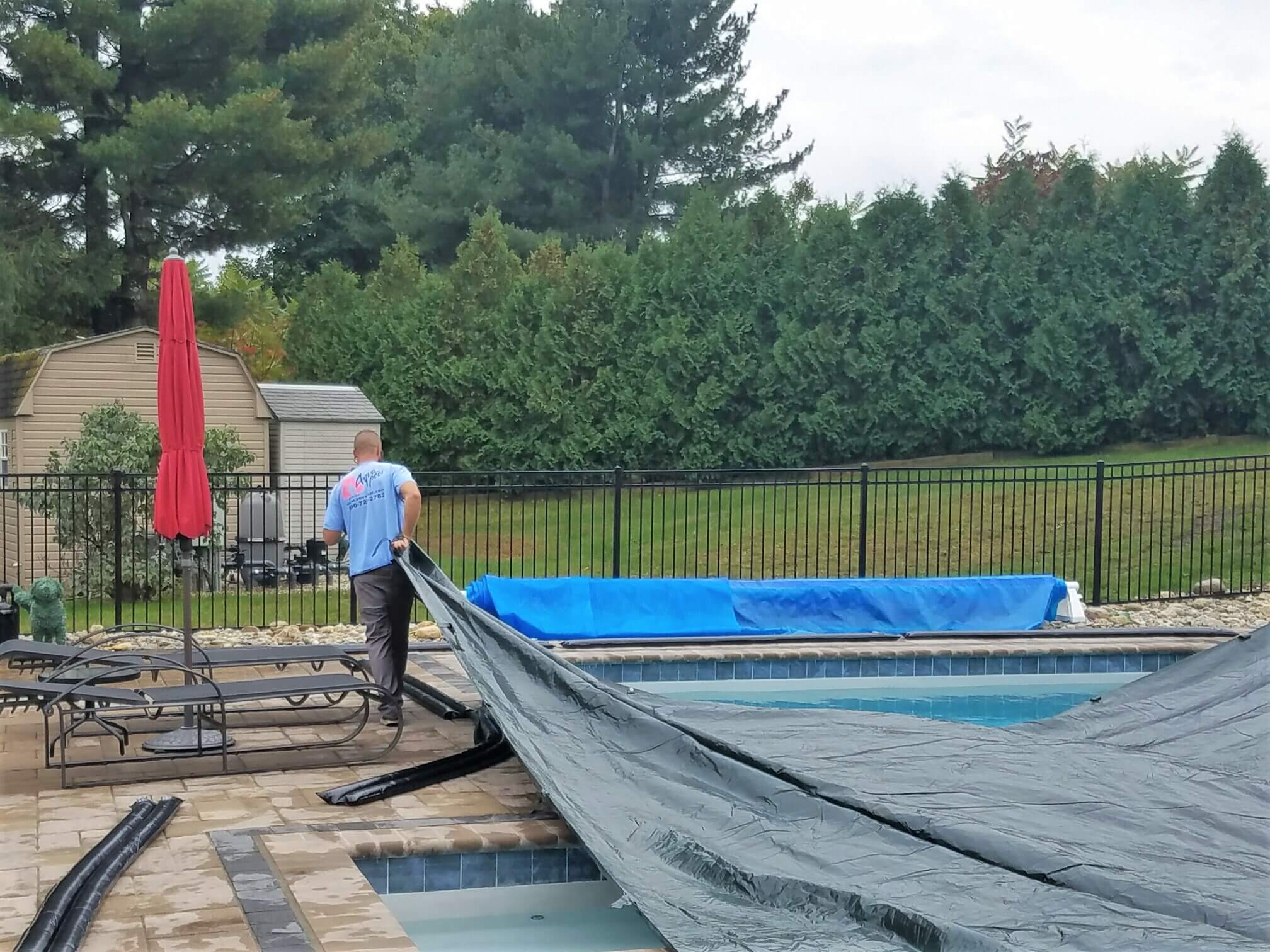8 Steps to Closing Your Pool This Fall
With the beginning of fall just a few weeks away, pool season is sadly coming to an end. While you may be planning to swim for as long as possible, it’s time to start thinking about how you will close your pool once the temperatures drop too low. Taking the proper steps to close your pool is essential for keeping the water clean throughout the winter, preventing costly damage to the pool’s structure and equipment, and making it easier to get your pool ready for swimming once you open it in the spring. Here are eight key steps to closing your pool in the fall:
- Identify the right time to close the pool. As a general rule, it’s better to close your pool as late in the season as possible. If the weather is too warm when you take the steps needed for closing, your pool will consume any chemicals that you’ve added more quickly. This may cause algae to grow and the water to become murky and unsanitary during the winter months, making it more difficult to get your pool ready to use in the spring. The ideal time to close your pool is when the water is consistently below 60 degrees Fahrenheit because algae and microorganisms will become dormant at these temperatures. At Aqua Pool & Patio, most of our customers close their pools in October.
- Thoroughly clean the pool using a brush and vacuum in order to remove algae spores and debris.
- Test the water so that you know the proper quantities of chemicals to be added. For best results, consider having your pool water professionally tested. At Aqua Pool, we use specialized software that measures chemical levels more accurately than store-bought test strips can; just bring a sample of the water to our location in East Windsor, Connecticut, and we will conduct the testing free of charge.
- Add the right chemicals—which may include algaecide, pool enzymes, and shock—to keep your pool clean throughout the winter. This will help prevent corrosion, build-up, and bacteria and algae growth while the pool is closed.
- Remove some water so that the water level is below the tile line or the bottom edge of your skimmer. While the optimal level will depend on the type of pool surface and cover that you have, lowering the water level in your pool before winter is an important way to prevent damage in the event of freezing.
- Blow out the plumbing lines. It’s essential to remove all of the water from your lines, pump, and filter in order to prevent fractures when temperatures drop below freezing. This process requires extreme care; attempting it without the requisite skill could result in expensive damage to the pool plumbing.
- Clean the filter and pump so there is no debris or bacteria sitting in them throughout the winter.
- Cover the pool. Once your pool has been thoroughly prepped for the off-season, it’s time to seal it with a cover. There are numerous types of covers available; be sure to follow the instructions for your specific pool cover, and keep it clean over the winter so it does not sink into the water.
Since the pool-closing process is time-consuming and risky if you don’t have the right equipment and expertise, we strongly recommend consulting the professionals at Aqua Pool & Patio when it’s time to get your pool ready for winter. Our licensed professionals have the experience needed to meticulously perform the above steps, ensuring that your pool will be clean, healthy, and free of damage when you’re ready to use it in the spring. Our pool closing services are very popular and our appointments are filling up quickly, so we encourage you to call us NOW at 860-623-9886 or visit https://www.aquapool.com/our-services/pool-maintenance/ to learn more about our pool maintenance services!




